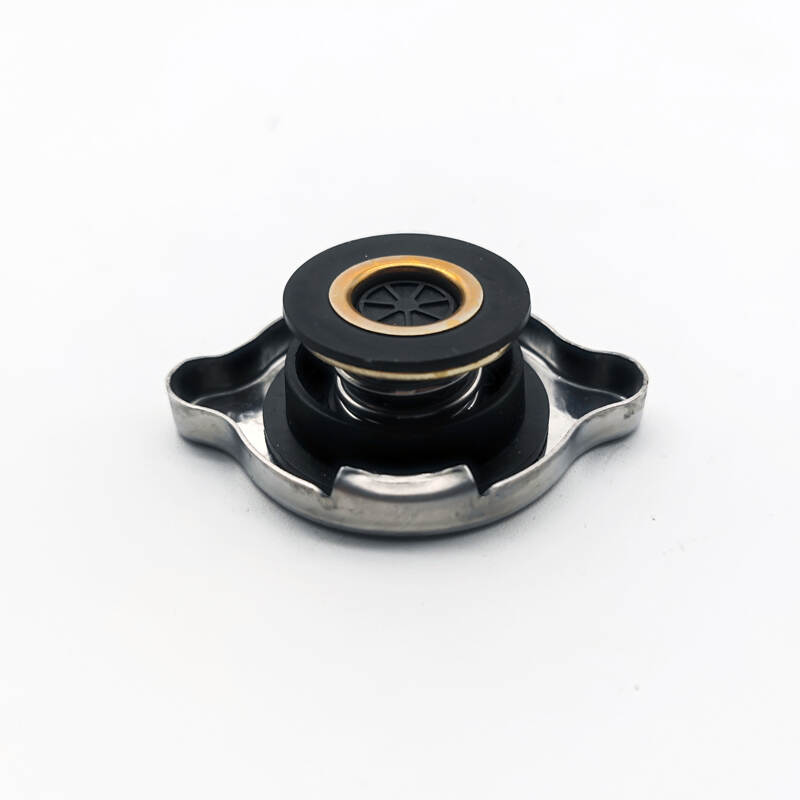Email format error
Email cannot be empty
Email already exists
6-20 characters(letters plus numbers only)
The password is inconsistent
Email format error
Email cannot be empty
Email does not exist
6-20 characters(letters plus numbers only)
The password is inconsistent


How to Choose the Right Radiator Cap: 7 Critical Factors You Can't Ignore
Your vehicle's radiator cap might look like a simple component, but it plays a crucial role in maintaining your engine's health. Often overlooked during routine maintenance, this small but vital part acts as the guardian of your cooling system. In this comprehensive guide, we'll break down everything you need to know about selecting the ideal radiator cap for your vehicle.
Why Your Radiator Cap Matters More Than You Think
The radiator cap serves three essential functions:
Pressure Regulation: Maintains optimal system pressure (typically 13-18 PSI)
Coolant Recovery: Manages fluid expansion through the overflow reservoir
Seal Protection: Prevents air intrusion and coolant contamination
Key Selection Criteria for Radiator Caps
1. Pressure Rating Compatibility
Always match your cap's pressure rating to manufacturer specifications. Common ratings include:
13 PSI for standard passenger vehicles
16-18 PSI for performance vehicles
20+ PSI for heavy-duty applications
Pro Tip: Use a pressure tester to verify your current cap's performance before replacement.
2. Material Quality and Durability
Look for these premium materials:
Stainless steel springs
Viton rubber seals
Nickel-plated bodies
Avoid caps with plastic components in critical sealing areas.
3. Vehicle-Specific Compatibility
Consider these matching factors:
Neck diameter (30mm, 33mm, or 36mm)
Thread pattern and depth
OEM vs aftermarket design specifications
Specialized Cap Types Explained
1. Standard Pressure Caps
Ideal for daily drivers and stock vehicles
2. High-Performance Caps
Features include:
Reinforced sealing surfaces
Temperature-resistant materials
Precision pressure relief valves
3. Racing-Specific Caps
Designed for:
Extreme temperature fluctuations
High RPM operation
Quick-release mechanisms
Installation and Maintenance Best Practices
Follow these steps for optimal performance:
Clean the filler neck thoroughly
Inspect the sealing surface for damage
Hand-tighten plus 1/4 turn
Test system pressure after installation
Troubleshooting Common Issues
1. Coolant Leaks
Possible causes:
Worn seal
Incorrect pressure rating
Cracked cap body
2. Overheating Problems
Check for:
Stuck pressure valve
Blocked overflow tube
Inadequate pressure maintenance
When to Replace Your Radiator Cap
Replace your cap immediately if you notice:
Visible corrosion or damage
Coolant loss without apparent leaks
Overheating during normal operation
More than 3 years of service
Top 5 Recommended Radiator Cap Brands
1. Stant SuperStat
2. Mishimoto CNC Billet
3. Gates Premium
4. Motorad OE-Spec
5. APDTY Performance Series
Conclusion: Protect Your Engine with the Right Choice
Selecting the proper radiator cap requires attention to technical specifications and quality construction. By understanding pressure requirements, material compatibility, and your vehicle's specific needs, you can ensure optimal cooling system performance and prevent costly engine damage. Remember - a quality radiator cap typically costs less than $25 but can save you thousands in repair bills.
Final Checklist:
Verify OEM pressure rating
Check neck diameter compatibility
Inspect seal condition regularly
Replace every 2-3 years

